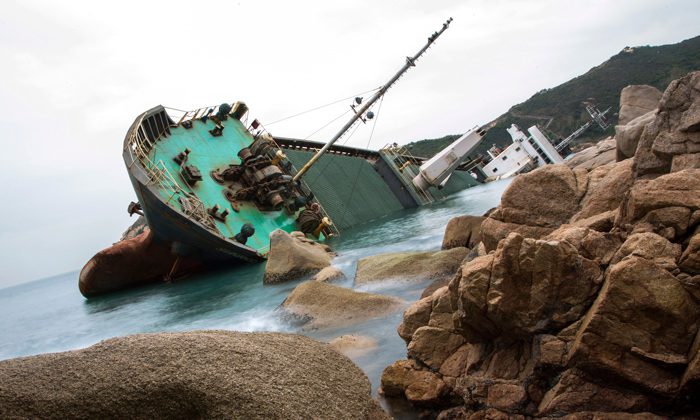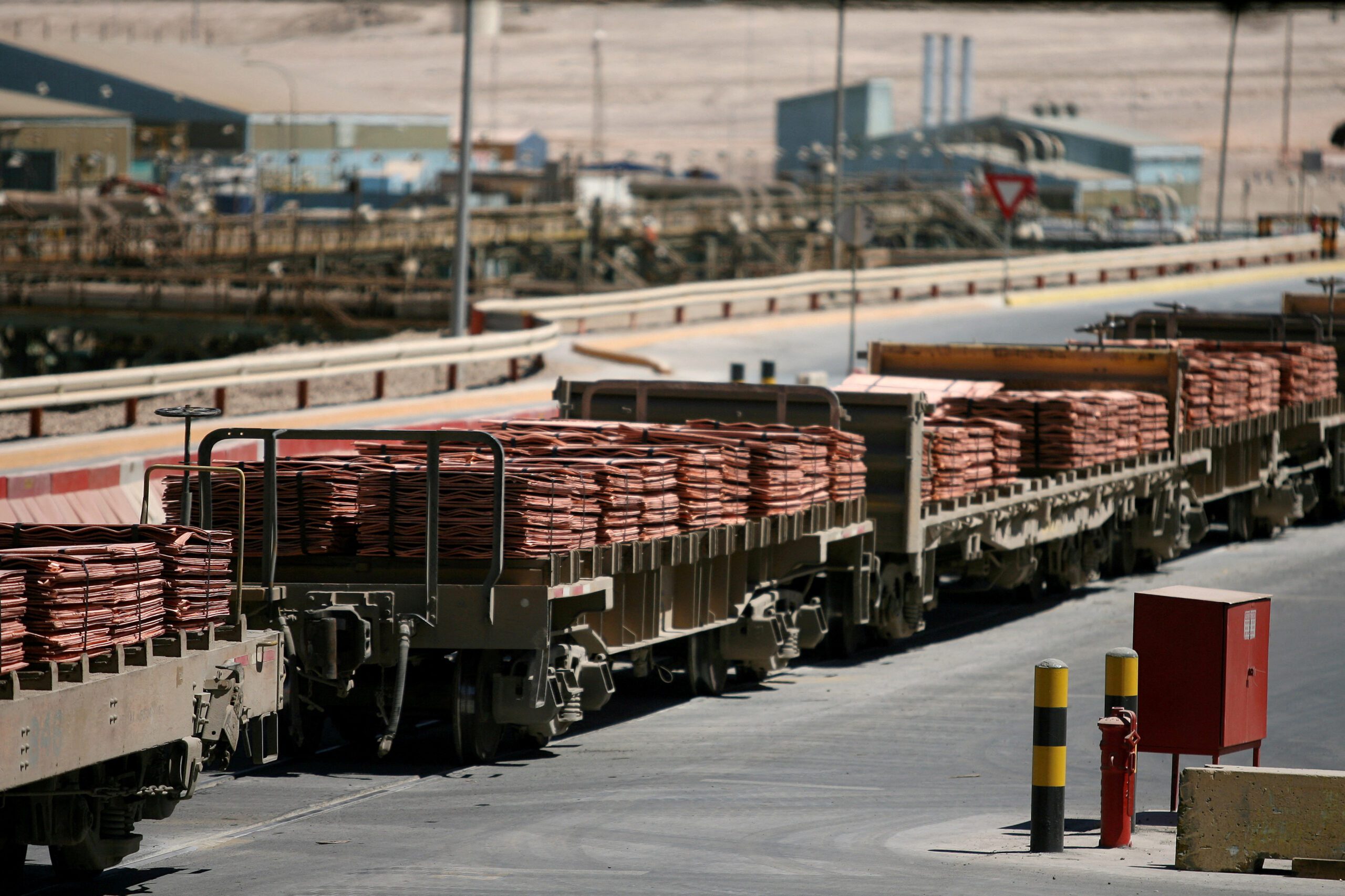Image (c) REUTERS/Tyrone Siu
Sunrise Orient, a 90-meter ship carrying 2,800 tons of cement lies aground today at Cheung Chau in Hong Kong. She has sat there since running aground on 21 February.
According to Reuters, the vessel “was listing when its crew abandoned it and refused to return to turn off the engine for fear of being trapped if it sank, leaving the ship to break down and drift onto the rocky beach at Tung Wan Tsai, Cheung Chau.”
The ship had just refuelled in Hong Kong while on its way to Indonesia when the incident occurred.
According to a report today by Allianz Global Corporate & Specialty (AGCS), 94 large ships were lost worldwide in 2013, a 20 percent decrease year-on-year from 2012. The report notes that the majority of the losses since 2002 have been due to foundering and were located in the South China Sea and SE Asia regions. The following graphic shows where these incidents have historically occurred since 2002:

Giving reason to the increased incidents of foundering in the SE Asia region is the danger of cargo liquefaction, one that is inherent to bulk carriers transporting materials such as nickel ore between Indonesia and China. Singapore-based Captain Jarek Klimczak, Master Mariner and Senior Marine Risk Consultant at AGCS notes in the AGCS report,
“While the IMO sets the regulation, each shipper must provide the information on the moisture content of the cargo. So the regulations are there, but, in some cases, they are not always applied in Indonesia due to instances of corruption and bureaucracy. While the quality carriers will refuse to carry this cargo and quality insurance companies will refuse to insure this cargo, some smaller owners may decide to do so.”
Tim Donney, Global Head Marine Risk Consulting at AGCS highlights the wet climate found in the SE Asia region contributes to the dangers, complicating the proper handling and monitoring of these dry bulk cargos. He adds, “A lesser risk would be a terminal that is dedicated to the handling of a specific bulk product; then you have people at the terminal that understand the risk better and have tighter controls and procedures. Also, they’re not under as much time pressure to get ships loaded as a public terminal with a backlog of ships waiting for dock space.”
2013 was also a game-changer for the containership industry on a global scale which was brought front-and-center on a global scale with the epic loss of the MOL Comfort, the Mitsui O.S.K. Lines-owned 90,613 dwt container ship which broke apart and sank in the Indian Ocean last summer.
Although very few conclusions have been made on what exactly occurred that resulted in the ship’s total loss, the issue of container weight misdeclaration and misrepresentation. “For shipping and marine, a ship-owner or master has absolutely no control on what’s inside the container, how it’s packed and its declaration; it’s the responsibility of the shipper to accurately declare the contents,” notes AGCS’ Senior Risk Consultant Captain Rahul Khanna.
The possibility that misdeclared container weights were a factor in the loss of the MOL Comfort appears quite possible, but not only that, misdeclared, or non-declared items within containers have also been a factor in incidents such as the MSC Flaminia fire in which crew members were killed.
For a copy of AGCS’ full report, please email [email protected]

 Join The Club
Join The Club












